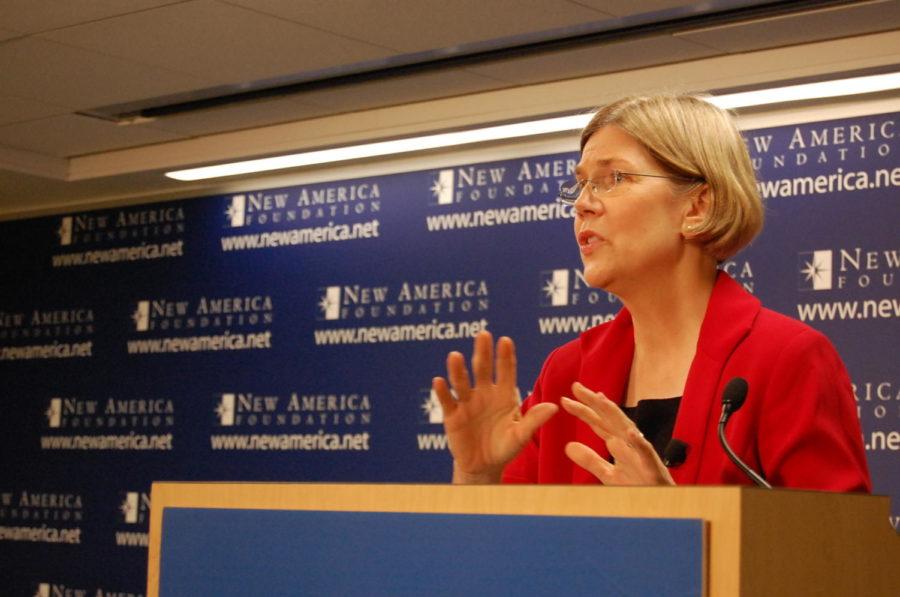Caucus season is coming: Here is what Iowa can expect
January 16, 2019
The 2020 presidential election is less than two years away, but caucus season is fast approaching. For Iowa, this means a constant flow of political candidates will test their messages, speak to voters and some will even visit all 99 Iowa counties as they try to build momentum for the primary election.
During this election cycle, all eyes will be on the fast-growing field of Democratic candidates. Unlike the 2016 cycle, which had both parties narrowing down candidates to face off in the general election, few-to-no Republican candidates will participate in the primary cycle as President Donald Trump is the established nominee.
“In 2016 we had a term limited president so everyone was vying for a spot within their respective party,” said Kelly Shaw, senior lecturer of political science at Iowa State. “Now there is some talk that someone will primary the president, but that would be pretty extraordinary … It will be mostly Democrats around the state as a result.”
The Iowa caucuses are the first of many primary elections in the nation and can provide a stepping stone for candidates to gain free publicity and coverage within their party while they spend nearly a year campaigning. While the Iowa caucuses are scheduled on Feb. 3, 2020, candidates make trips to Iowa to make a name for themselves far ahead of that time.
“So much of getting the nomination has to do with name recognition and being able to raise money, so those two go hand in hand when it comes to the popularity and importance of the Iowa caucuses,” Shaw said. “As you move in and through the process, many candidates are able to receive free press coverage and get their name out there.”
Shaw said part of why candidates with little recognition are able to get their name out there is through the “horse race coverage” methods the media implements: The candidate who is considered to be the front-runner changes constantly, so the focus of the media often changes and provides opportunities for their name to be heard, especially if they announce and start organizing early.
“Whoever wins Iowa and gets that momentum going into the next state, New Hampshire, that is the story,” Shaw said. “That candidate is seen as the frontrunner and they typically do better as a result.”
To get this momentum going and to get their “free coverage” Democratic candidates have started making visits to Iowa, such as Massachusetts Sen. Elizabeth Warren, former Secretary of Housing and Urban Development Julián Castro and Maryland Rep. John Delaney. New York Sen. Kirsten Gillibrand, who announced her run Tuesday, plans to visit Iowa during the weekend.
Shaw said these candidates have come and received a considerable amount of coverage by the media, but there is still a long way to go with more Democrats expected to announce or visit the state.
“It isn’t just about gaining momentum for your campaign; it is about keeping it,” Shaw said. “Iowa is just the first stop and candidates who fare well in Iowa don’t always do as well moving forward. Iowa is whiter than most states, overly conservative and is generally more middle class. It isn’t the most representative state.”
This can spell trouble for certain candidates within the process, as Shaw said the media focuses more on how well someone did compared to their expectations after the Iowa caucus, which, for some voters, shapes the narrative on how viable the candidate is.
Regardless, many candidates make a large effort to impact and stay in the minds of Iowa voters, and candidates are coming to Iowa sooner than previous years to make their mark.
During the 2016 election cycle, the first major candidate to come to Ames was Republican Rand Paul on Feb. 7, 2015. Following that, there were visits by Democrat Bernie Sanders — before he had announced his candidacy — on Feb. 23, Democrat Hillary Clinton on April 15 and Republicans Donald Trump, Rand Paul, Ted Cruz, Scott Walker and Marco Rubio on Sept. 12 of that year to visit Ames and tailgate at Jack Trice Stadium before the Cy-Hawk football game.
By comparison, candidates are already holding meet and greets across the state, including Gillibrand, who will have her first visit to Ames on Saturday — nearly a month sooner than candidates in previous election cycles.
Some candidates haven’t announced but are expected to visit Iowa as early as Oct.ober 2018. Sens. Cory Booker, Kamala Harris and Bernie Sanders all visited Iowa before the midterm election, but Shaw said their time in Iowa served more than just a space to campaign for the midterm.
“Some of the people who come to Iowa will run, but others come to get a sense to gauge their messaging,” Shaw said. “Many potential candidates come to Iowa and do internal tracking and polling, and they are getting a sense for what kind of candidate will be able to win Iowa.”
Those political gauges and message testing opportunities will serve a useful function for the Democratic Party which Shaw described as “sort of a hot mess. While the party has a “social progressive” or social-democratic side, they also have a more conservative mainstream democratic party. Both of these sides are trying to increase their traction and impact, so Iowa will be a potential place for them to do more research into what messages work.
















